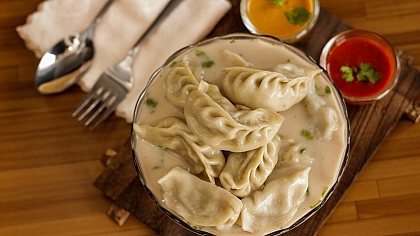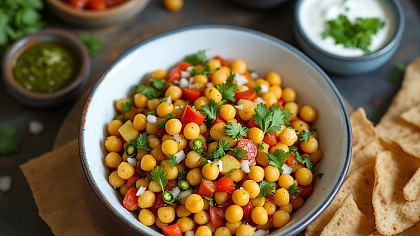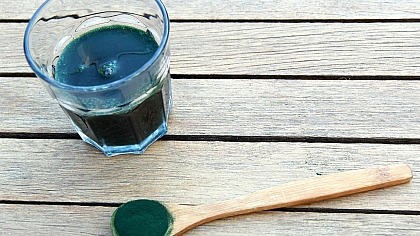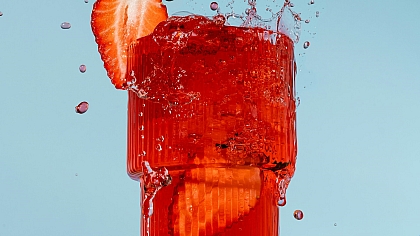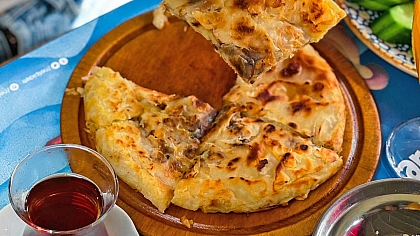
Desi Treats Everyone Should Try: A Journey of South Asian Snacks
Desi treats are a delightful array of snacks, sweets, and beverages that originate from the diverse cultures of South Asia, particularly India, Pakistan, Bangladesh, and surrounding regions. These treats are renowned for their vibrant flavours, unique textures, and rich cultural significance. From street food vendors to family kitchens, desi treats have a special place in the hearts and taste buds of millions.
Importance and Popularity in Asian Cuisine
The importance of desi treats in Asian cuisine cannot be overstated. They play a pivotal role in festivals, celebrations, and everyday life, offering a burst of flavour and joy. Whether it's the refreshing sip of Rooh Afza on a hot day, the crispy bite of pani puri at a bustling market, or the sweet indulgence of gulab jamun at a wedding, desi treats are integral to the cultural and culinary landscape of South Asia. Their popularity has transcended borders, captivating food enthusiasts around the world who seek to experience the rich heritage and diverse flavours of desi cuisine.
Refreshing Beverages
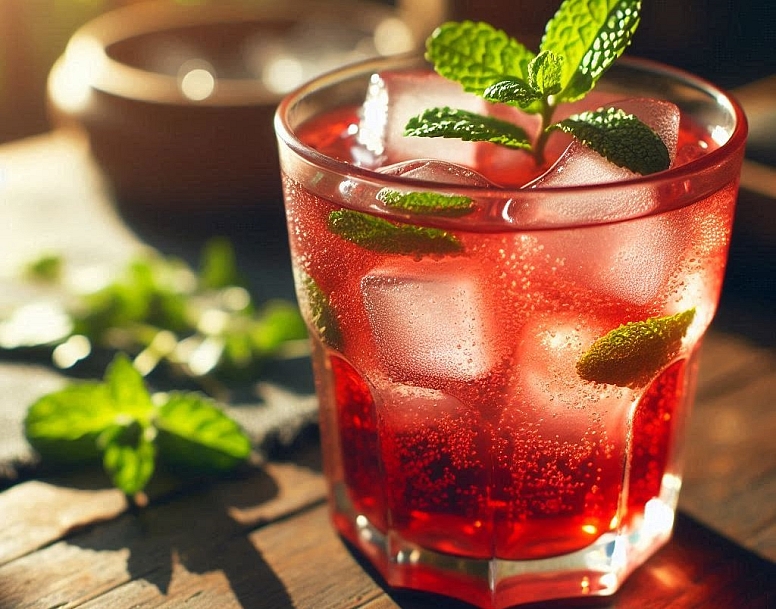
Rooh Afza: Rooh Afza, often referred to as the "summer drink of the East," is a concentrated syrup made from a blend of herbs, fruits, vegetables, and flowers. Its deep red colour and refreshing taste make it a popular choice for cooling down during the hot summer months. Typically mixed with water or milk, Rooh Afza is also used in various desserts and sweet dishes. Its unique flavour profile, combining sweet and floral notes, makes it a beloved beverage across South Asia and among diaspora communities worldwide.
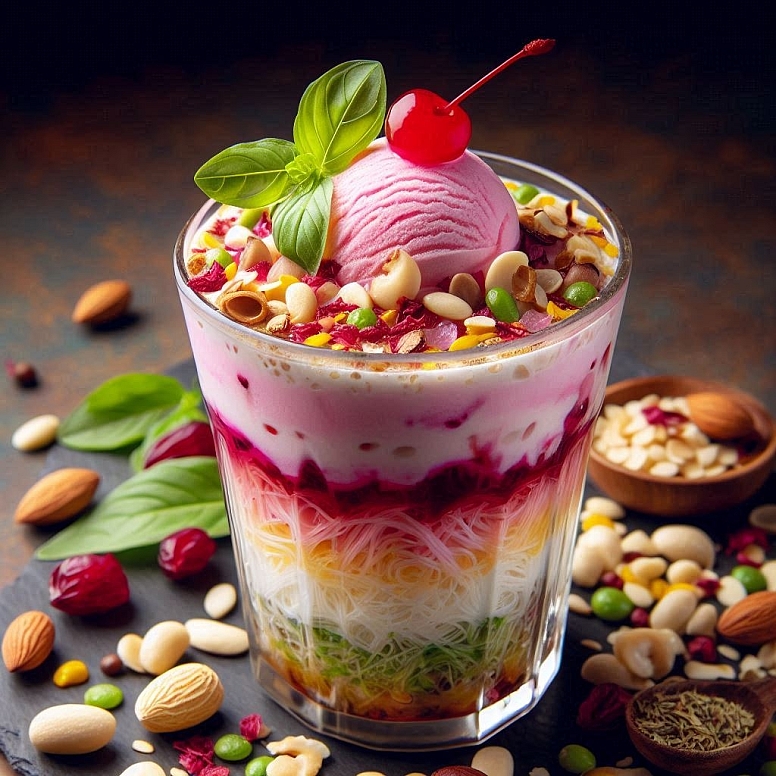
Falooda: Falooda is a rich and creamy dessert beverage that combines a variety of textures and flavours. Made with rose syrup, vermicelli noodles, basil seeds, jelly, and milk, it is often topped with a scoop of ice cream or kulfi. This layered drink is not only visually appealing but also offers a delightful mix of chewy, crunchy, and creamy elements. Falooda is a popular choice for special occasions and is enjoyed as a treat to beat the heat.
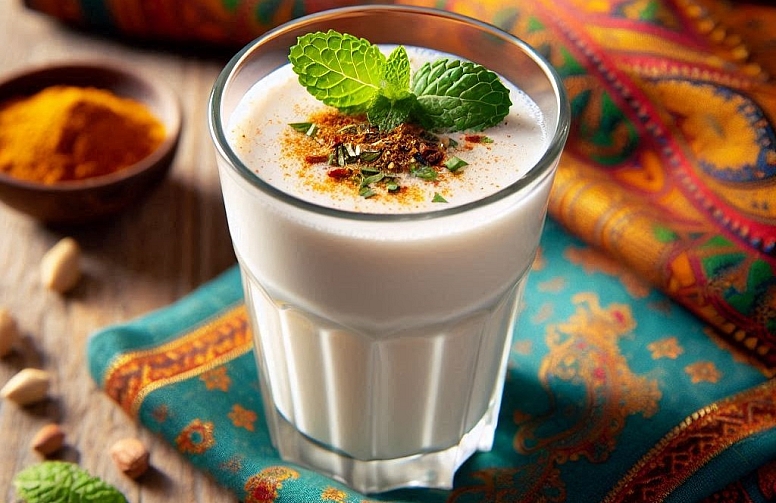
Lassi: Lassi is a traditional yoghurt-based drink that comes in both sweet and savoury varieties. Sweet lassi is flavoured with sugar, fruit, or rose water, while savoury lassi, also known as salted lassi, is seasoned with salt, cumin, and sometimes mint. Mango lassi, made with ripe mangoes, is particularly popular for its creamy texture and tropical flavour. Lassi is valued not only for its refreshing taste but also for its probiotic benefits, aiding in digestion and cooling the body.
Savory Snacks

Pani Puri (Gol Gappa): Pani puri, also known as gol gappa or puchka, is a quintessential Indian street food that tantalizes the taste buds with its explosion of flavours. This treat consists of hollow, crispy puris filled with a mixture of spiced potatoes, chickpeas, and tangy tamarind water. The puris are typically punctured and filled on the spot, ensuring maximum freshness and crunch. The combination of spicy, tangy, and sweet flavours, along with the contrasting textures, makes pani puri an irresistible snack that is beloved by people of all ages.
Chaat: Chaat is a broad category of savoury snacks that are known for their bold flavours and diverse ingredients. Some popular types of chaat include:
- Aloo Chaat: Fried potato cubes tossed in a tangy and spicy mix of chutneys, chaat masala, and fresh herbs.
- Papdi Chaat: Crispy wafers topped with boiled potatoes, chickpeas, yoghurt, chutneys, and sev (crispy noodles).
- Bhel Puri: A mix of puffed rice, vegetables, chutneys, and sev, creating a crunchy and flavourful snack.
Chaat is typically garnished with fresh cilantro, pomegranate seeds, and a squeeze of lime juice, adding freshness and vibrancy to the dish.
Nimko: Nimko, also known as namkeen or sev, is a savoury snack mix that is immensely popular in Pakistan and India. It usually consists of a variety of fried lentils, chickpeas, peanuts, and spiced sev (fried noodles). Nimko is flavoured with a blend of spices, making it a crunchy and addictive snack. It is often enjoyed with tea or as a quick bite on the go, providing a perfect balance of salty, spicy, and crunchy elements.
Samosas: Samosas are deep-fried pastries filled with a savoury mixture of spiced potatoes, peas, and sometimes meat. These triangular snacks are crispy on the outside and soft on the inside, offering a delightful contrast in texture. Samosas are commonly served with chutneys, such as mint or tamarind, which enhance their flavour. They are a staple at parties, gatherings, and festivals, making them one of the most popular desi snacks.
Pakoras: Pakoras, also known as bhajis or fritters, are a popular snack made by dipping vegetables or meat in spiced gram flour (besan) batter and deep-frying them until crispy. Common pakora varieties include onion, potato, spinach, and chicken. Pakoras are typically served with chutney or ketchup and are a favourite during the monsoon season, enjoyed with a hot cup of chai.
Spicy Delights
Chili Mili: Chili Mili is a popular Pakistani snack known for its distinctive spicy and tangy flavour. These gummy candies are shaped like small chilli peppers and tamarinds and come in vibrant colours. They are made from a combination of gelatin, sugar, and chilli powder, creating a unique blend of sweetness and heat. Chili Mili is a favourite among children and adults alike, offering a fun and fiery treat that is both chewy and flavourful.
Aloo Bhujia: Aloo Bhujia is a crunchy snack made from chickpea flour and spiced potatoes. This savoury treat is shaped into thin, noodle-like strands and deep-fried to perfection. It is seasoned with a blend of spices, including chilli powder, black salt, and garam masala, giving it a distinctive tangy and spicy taste. Aloo Bhujia is often enjoyed on its own as a snack or used as a topping for chaats and other Indian dishes to add an extra layer of crunch and flavour.
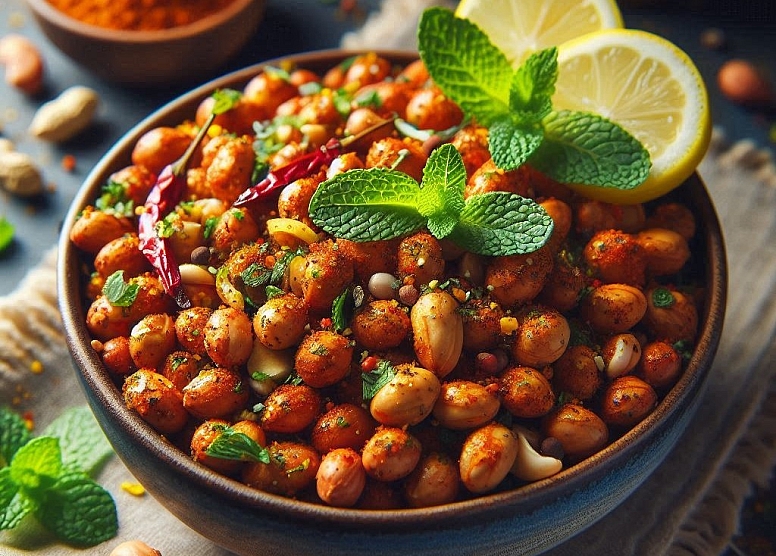
Masala Peanuts: Masala Peanuts are a spicy and flavourful snack made by coating roasted peanuts with a mixture of spices and flour. The peanuts are typically seasoned with chilli powder, turmeric, cumin, and other spices, creating a savoury and slightly crunchy treat. Masala Peanuts are a popular choice for snacking, especially with a cold drink, and are often enjoyed during festive occasions and gatherings.
Sweet Indulgences
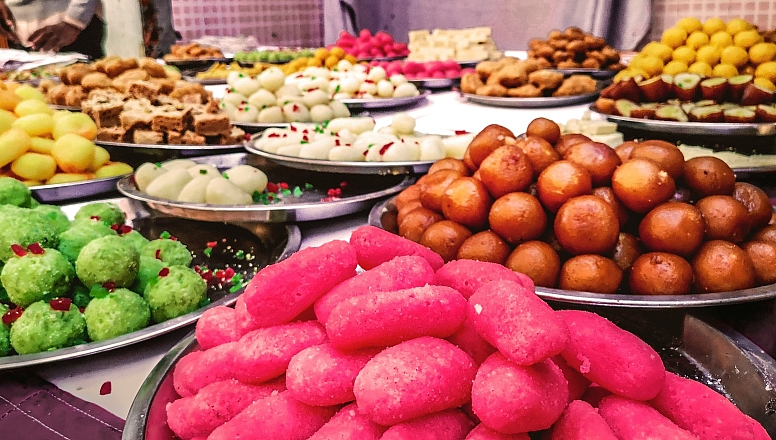
Gulab Jamun: Gulab Jamun is a classic South Asian dessert made from deep-fried dough balls soaked in a fragrant sugar syrup flavoured with rose water or cardamom. The dough is typically made from khoya (reduced milk solids) or milk powder, and the resulting balls are fried until golden brown. When soaked in the syrup, they become soft, juicy, and incredibly sweet. Gulab Jamun is often served warm and is a staple dessert at weddings, festivals, and celebrations.
Jalebi: Jalebi is a popular sweet treat made by deep-frying a fermented batter in circular shapes and then soaking the fried spirals in sugar syrup. The result is a crispy, sticky, and syrupy dessert that is both crunchy and juicy. Jalebi is known for its bright orange colour and unique spiral shape. It is often enjoyed with milk or rabri (thickened sweetened milk) and is a favourite during festivals and special occasions.
Rasgulla: Rasgulla is a south-Asian dessert made from soft, spongy cheese balls (chenna) cooked in a light sugar syrup. These white, round sweets are known for their delicate texture and mildly sweet flavour. Rasgulla is a popular dessert in Bengal and Odisha and is often served chilled. Its lightness and simplicity make it a refreshing and delightful treat.
Barfi: Barfi is a dense, milk-based sweet that comes in various flavours and shapes. Made from condensed milk and sugar, it is cooked until it solidifies and can be cut into squares or diamond shapes. Popular varieties include plain milk barfi, kaju (cashew) barfi, and pista (pistachio) barfi. Barfi is often garnished with edible silver leaf and nuts, adding to its visual appeal and flavour. It is a must-have during festivals and celebrations.
Halwa: Halwa is a broad category of sweets that vary widely in ingredients and preparation methods. Some popular types include:
- Sooji Halwa: Made from semolina, sugar, and ghee, often flavoured with cardamom and garnished with nuts.
- Gajar Halwa: A rich, sweet dessert made from grated carrots, milk, sugar, and ghee, cooked until soft and fragrant.
- Besan Halwa: Made from gram flour, sugar, and ghee, offering a nutty and rich flavour.
Halwa is a beloved dessert in many South Asian households, enjoyed during festivals, and religious ceremonies, and as a comforting treat.
Regional Specialties
Ras Malai: Ras Malai is a popular dessert from the Indian subcontinent, particularly favoured in Bengal and Punjab. It consists of soft, spongy paneer (Indian cottage cheese) balls soaked in thickened, sweetened milk flavoured with cardamom and saffron. The milk is often garnished with a sprinkling of nuts like pistachios and almonds, adding a delightful crunch to the creamy dessert. Ras Malai is typically served chilled and is a favourite during celebrations and festive occasions.
Petha: Petha is a traditional sweet from the Indian city of Agra, made from ash gourd (winter melon) that is cooked in sugar syrup until it becomes translucent and syrupy. This candied fruit is often flavoured with rose water or kewra essence and can be found in various forms, such as dry petha or angoori petha (grape-sized pieces). Petha is known for its unique texture, which is both chewy and slightly crisp, and is a popular souvenir for visitors to Agra.
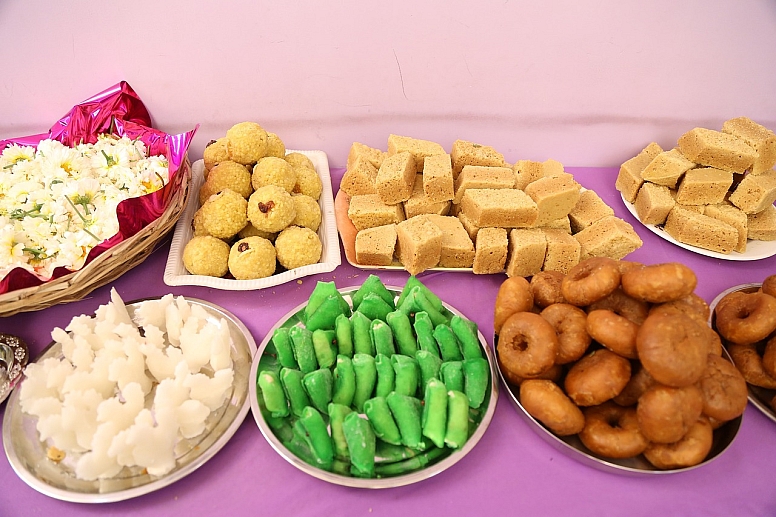
Mysore Pak: Mysore Pak is a rich, dense sweet that hails from the southern Indian state of Karnataka. It is made from a simple combination of ghee, sugar, and gram flour, cooked together until it forms a fudgy, melt-in-the-mouth treat. Mysore Pak is known for its rich flavour and crumbly texture, making it a beloved dessert in South India. It is often prepared during festivals like Diwali and offered as a special treat to guests.
Street Food Wonders
Kathi Rolls: Kathi Rolls are a popular street food from Kolkata, India, consisting of a paratha (flatbread) rolled up with a filling of spiced meat, eggs, or vegetables. The rolls are often garnished with onions, chillies, and chutneys, providing a burst of flavour in every bite. Kathi Rolls are convenient, portable, and highly customizable, making them a favourite snack or meal on the go.
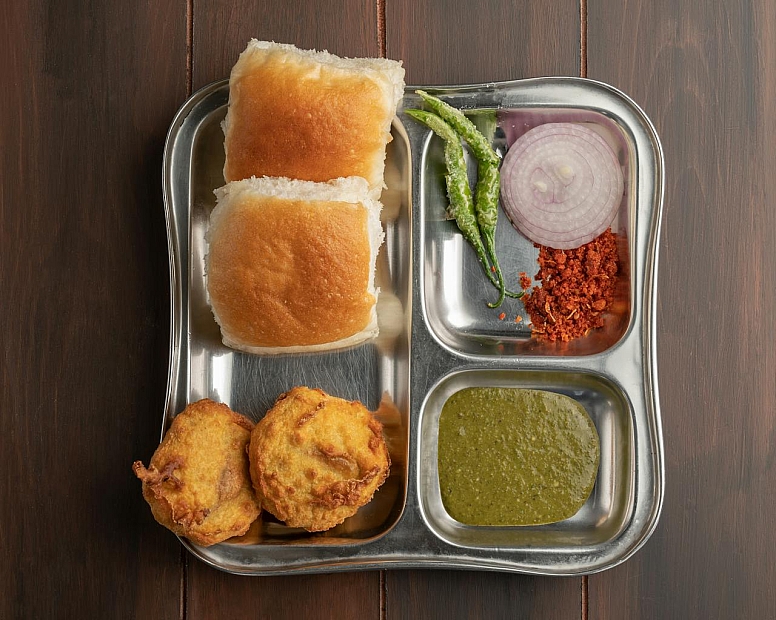
Vada Pav: Vada Pav is often referred to as the "Indian burger" and is a beloved street food in Mumbai. It consists of a spicy potato fritter (vada) sandwiched in a soft bun (pav) and served with various chutneys and fried green chilli. The combination of the crispy vada, soft pav, and tangy chutneys creates a satisfying and flavourful snack. Vada Pav is a staple in Mumbai's bustling street food scene and a must-try for anyone visiting the city.
Kebabs: Kebabs are a popular street food throughout South Asia, with countless variations depending on the region. Some popular types include:
- Seekh Kebabs: Spiced minced meat (often lamb or chicken) shaped onto skewers and grilled to perfection.
- Shami Kebabs: Patties made from minced meat and lentils, flavoured with spices and shallow-fried.
- Chapli Kebabs: Spicy, flat kebabs made from minced meat, popular in Pakistan and Afghanistan.
Kebabs are often served with naan, chutneys, and fresh salads, making them a hearty and flavourful meal.
Homemade Treats
Parathas: Parathas are a type of flatbread that is often stuffed with various fillings, making them a versatile and beloved dish in South Asian cuisine. They can be enjoyed for breakfast, lunch, or dinner. Common fillings include spiced potatoes (aloo paratha), cauliflower (gobi paratha), and paneer (paneer paratha). Parathas are typically cooked on a griddle with ghee or oil, resulting in a crispy exterior and a soft, flavourful interior. They are usually served with yoghurt, pickles, or chutneys, making them a hearty and satisfying treat.
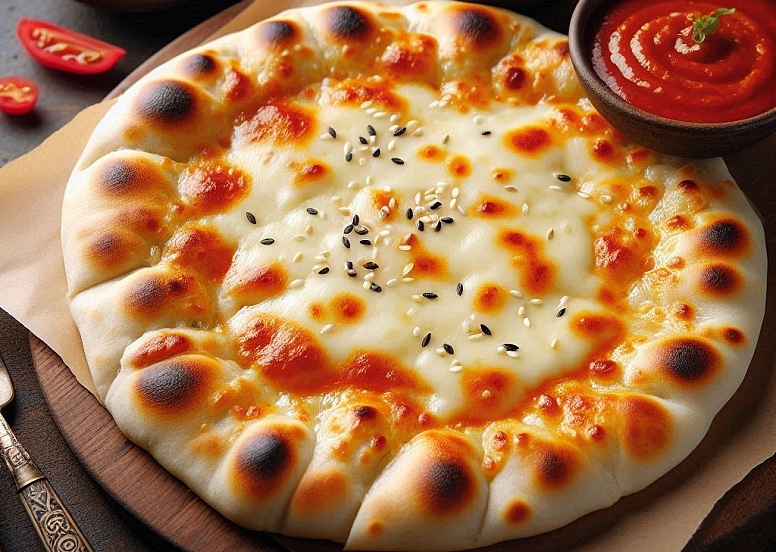
Stuffed Naans: Stuffed naans are another delicious variety of bread that can be filled with a range of ingredients. Some popular options include:
- Cheese Naan: Filled with gooey, melted cheese.
- Garlic Naan: Flavoured with fresh garlic and herbs.
- Keema Naan: Stuffed with spiced minced meat.
These naans are cooked in a tandoor oven, which gives them a unique smoky flavour and a slightly charred crust. Stuffed naans are often enjoyed with curries, making them a perfect accompaniment to a rich, flavourful meal.
Kheer: Kheer is a traditional Indian rice pudding made by simmering rice in milk and sugar, flavoured with cardamom and garnished with nuts and dried fruits. This creamy dessert is often enjoyed during festivals and celebrations. Variations of kheer can include ingredients like vermicelli (seviyan kheer) or tapioca pearls (sabudana kheer). The slow cooking process allows the flavours to meld together, creating a rich and comforting dessert that is loved by people of all ages.
Unique and Exotic Flavours
Chikki: Chikki is a traditional Indian brittle made from jaggery (unrefined sugar) and nuts or seeds. Popular varieties include:
- Peanut Chikki: Made with roasted peanuts.
- Sesame Chikki: Made with sesame seeds.
- Coconut Chikki: Made with shredded coconut.
The mixture of jaggery and nuts is cooked until it reaches a brittle consistency, then spread out and cut into pieces. Chikki is a popular snack during the winter months and festivals like Makar Sankranti.
Patisa: Patisa, also known as Soan Papdi, is a flaky, melt-in-the-mouth sweet made from gram flour, sugar, and ghee. This dessert is known for its delicate, layered texture that crumbles effortlessly. Often garnished with cardamom and nuts, Patisa is a popular sweet during festivals and celebrations. Its unique texture and rich flavour make it a favourite among sweet lovers.
Imarti: Imarti is a traditional Indian sweet made from urad dal (black gram) batter, which is piped into intricate, circular shapes and deep-fried. These crispy, golden spirals are then soaked in sugar syrup, resulting in a sweet and juicy treat. Imarti is similar to Jalebi but is thicker and has a different texture. It is often enjoyed during festivals and special occasions, and its bright orange colour and intricate design make it visually appealing.
From the refreshing sip of Rooh Afza to the sweet indulgence of Gulab Jamun, desi treats offer a delightful array of flavours and textures that capture the essence of South Asian cuisine. These treats, whether savoury or sweet, are deeply rooted in cultural traditions and have become an integral part of celebrations and everyday life.
Encouragement to Explore and Taste
Exploring the world of desi treats is a journey through rich culinary heritage and diverse flavours. Whether you are trying them for the first time or revisiting old favourites, these treats promise to tantalize your taste buds and provide a unique cultural experience.
So, indulge in the spicy delights, savour the sweet indulgences, and enjoy the refreshing beverages that make desi treats so special. Happy tasting!
FAQs
Q1: Where can I find authentic desi treats?
A: Authentic desi treats can be found at South Asian grocery stores, speciality food shops, and restaurants. Many of these treats are also available online through various retailers.
Q2: Are desi treats suitable for vegetarians?
A: Many desi treats are vegetarian-friendly, including popular snacks like samosas, pakoras, and sweets like gulab jamun and jalebi. However, some treats may contain ghee or dairy products, so it's always best to check the ingredients.
Q3: Can I make desi treats at home?
A: Yes, many desi treats can be made at home with the right ingredients and traditional recipes. Homemade treats can often be fresher and more customizable to your taste preferences.
Q4: Are desi treats gluten-free?
A: Some desi treats are naturally gluten-free, such as chikki and certain types of kheer. However, many savoury snacks and sweets may contain wheat flour or other gluten-containing ingredients. Always check the recipe or product labels if you have dietary restrictions.
Q5: What is the best way to store desi treats?
A: The best way to store desi treats depends on the type of treat. Sweets like barfi and halwa can be stored in airtight containers at room temperature or refrigerated. Snacks like nimko and masala peanuts should be kept in airtight containers to maintain their crunchiness. Always follow specific storage instructions for each treat to ensure freshness and quality.








